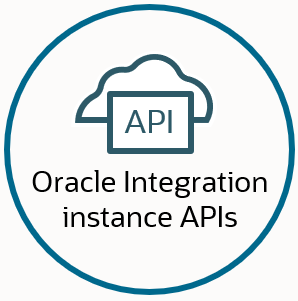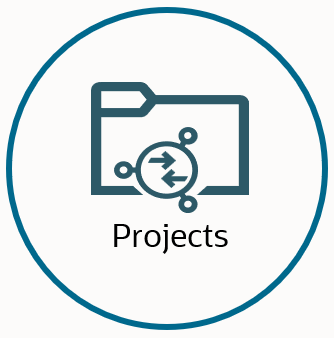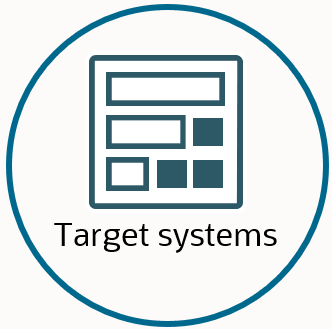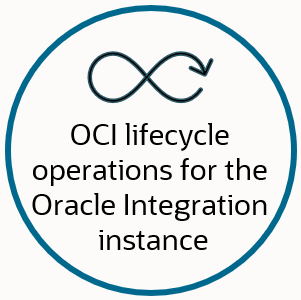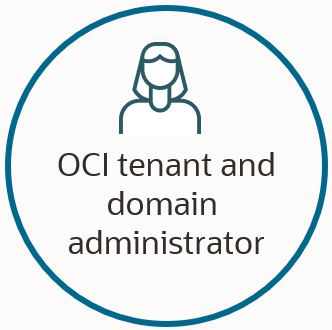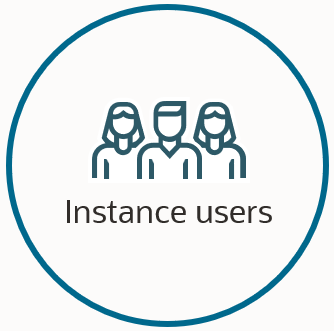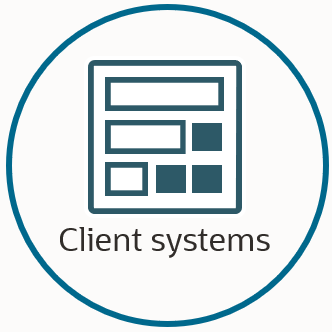Learn About Users and Resources
To understand access control, familiarize yourself with the resources that can require permissions, and the people and resources who require those permissions.
Big Picture: Resources, Managers, and Users
Before you dive into the details, review all the resources that require protection, the people who are responsible for protecting them, and the people and resources that access them.
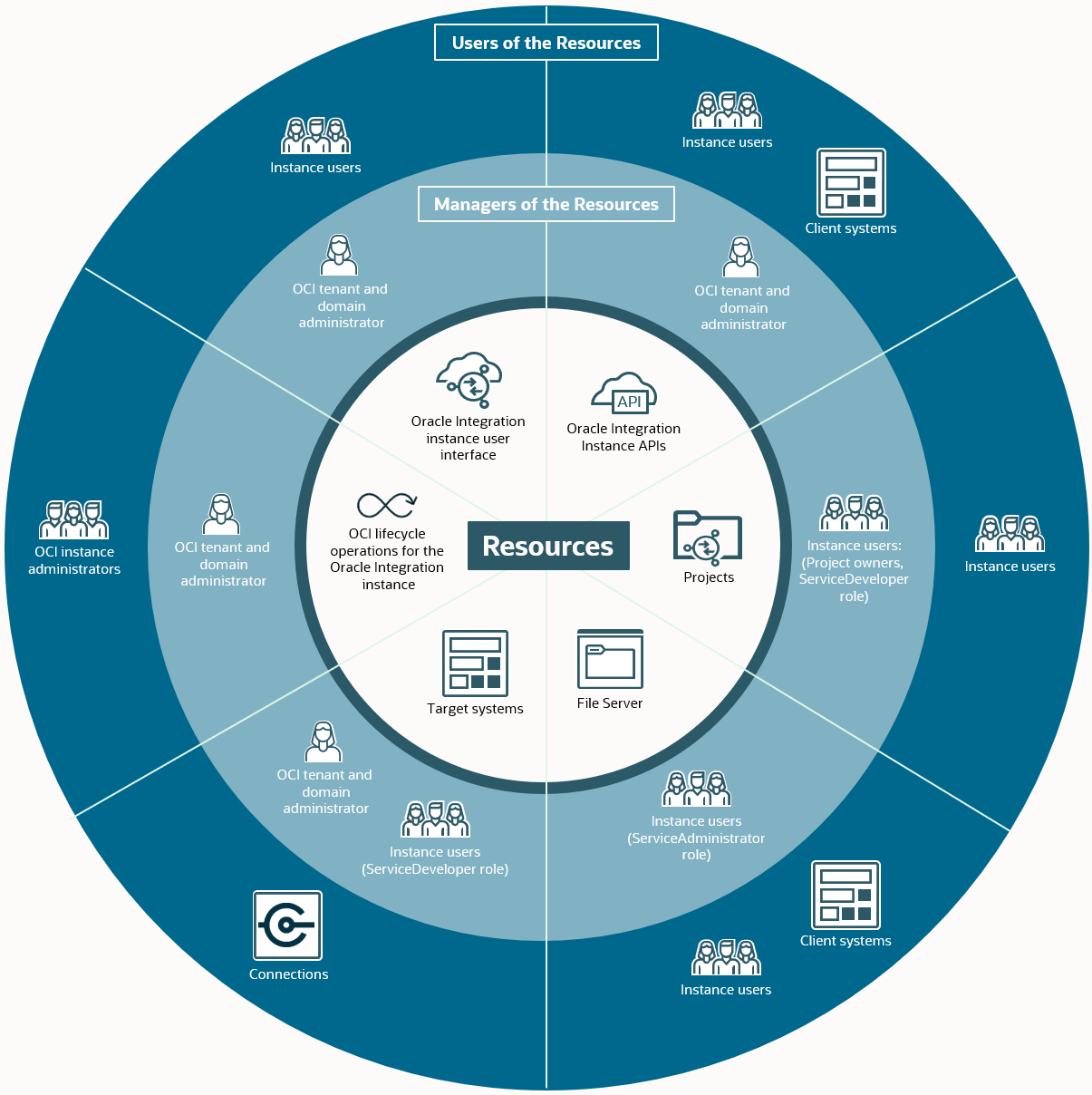
Resources
Familiarize yourself with all of the resources that your organization is responsible for protecting.
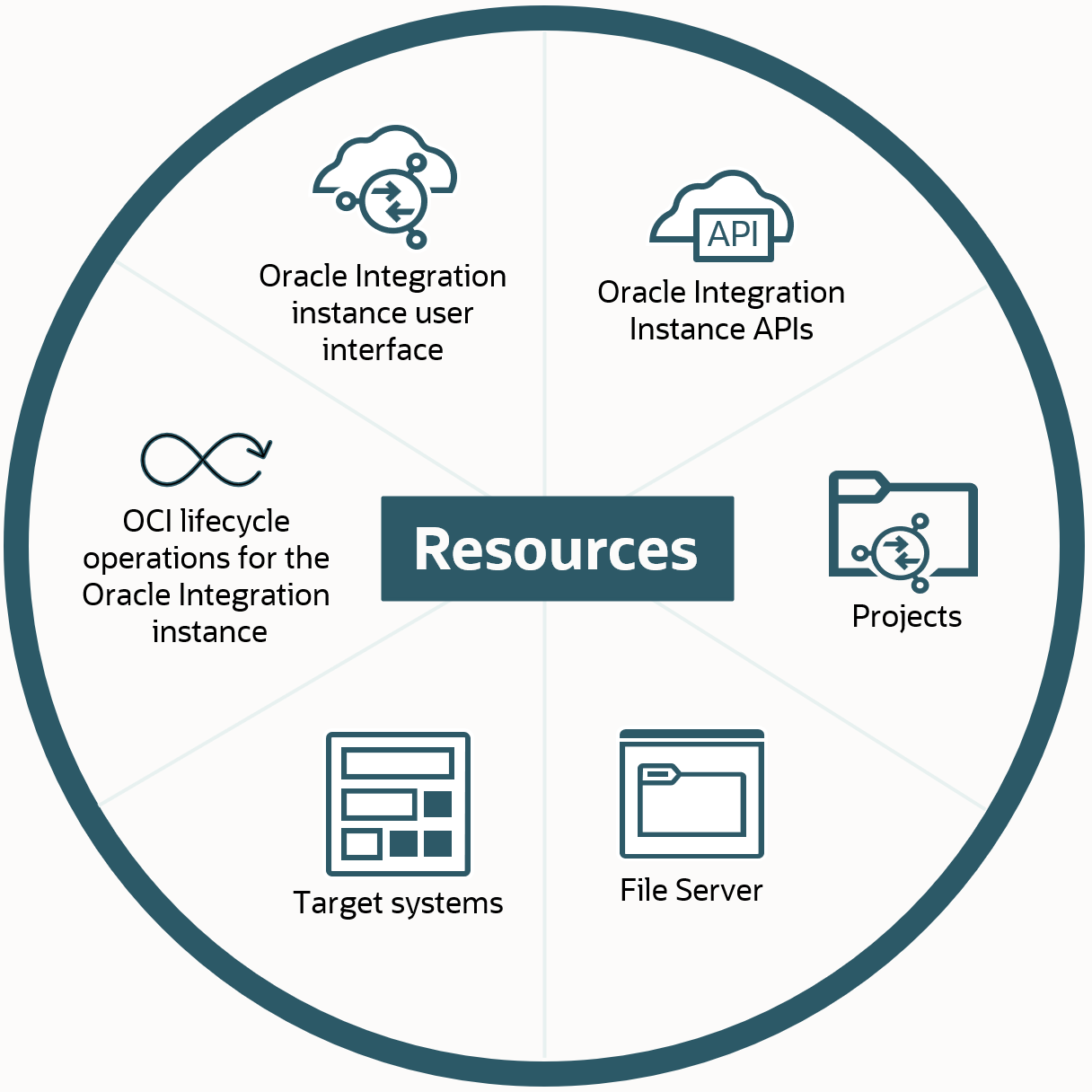
| Resource | Description |
|---|---|
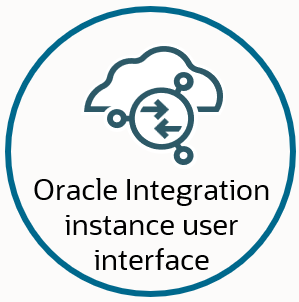 |
The Oracle Integration instance user interface is the service instance where Oracle Integration users sign in and then design, deploy, and monitor integrations. Users have two ways to access an Oracle Integration instance: its user interface and its APIs. |
|
|
The Oracle Integration instance APIs include the following types of APIs:
Note: The Oracle Integration Administrative API for provisioning and administering an Oracle Integration instance is separate from the Developer API for Oracle Integration 3. The Oracle Integration Administrative API is part of the Oracle Cloud Infrastructure APIs. Users have two ways to access an Oracle Integration instance: its user interface and its APIs. |
|
|
Projects are components within an Oracle Integration instance. Instance users work in projects, which provide a single workspace for designing, managing, and monitoring integrations. See Design, Manage, and Monitor Integrations in Projects in Using Integrations in Oracle Integration 3. |
|
|
File Server is an SFTP-compliant repository that is connected to an Oracle Integration instance. Use File Server for storing and retrieving files, and access it using its APIs or an SFTP client. People and integrations can access File Server. See About File Server in Using File Server in Oracle Integration 3. |
|
|
A target system is an application or service that an integration connects to and then completes a task in. An integration must be able to access target systems so that it can run as expected. Target systems can be Oracle services, third-party services, or applications that your organization has developed. |
|
|
You perform Oracle Cloud Infrastructure (OCI) lifecycle operations for the Oracle Integration instance using the Oracle Cloud Infrastructure Console. You have the following options for accessing the Oracle Cloud Infrastructure Console:
|
Managers of the Resources
At most organizations, several or many people are responsible for managing users' access to resources. These individuals typically use this guide to learn how to protect their organization's resources and data.
Note:
People often have several job functions. For instance, some instance users are also OCI (Oracle Cloud Infrastructure) instance administrators.| Job function | Description | Works in the Oracle Cloud Infrastructure Console through the user interface, APIs, or CLI | Works in the Oracle Integration instance through the user interface or the Developer API for Oracle Integration 3 |
|---|---|---|---|
|
|
The highest-level administrator for Oracle services is responsible for managing all services in your organization's Oracle Cloud Infrastructure tenancy. Responsibilities include the following:
|
|
|
|
|
This administrator manages the lifecycle of one or more Oracle Integration instances, including performing the following tasks:
|
|
|
|
Instance users with one or more of the following service roles:
|
Users' service roles determine their access. Granular service roles are available. See Oracle Integration Service Roles in Provisioning and Administering Oracle Integration 3. Instance users have different responsibilities, depending on their roles. For example, they might be responsible for some or all of the following tasks:
|
|
|
Users of the Resources
People and resources require permissions to access Oracle Integration and its related resources. In many cases, the people who manage access to Oracle Integration often also require access to Oracle Integration.
| User or resource | Description |
|---|---|
|
|
For details about Oracle Cloud Infrastructure (OCI) administrators, see Managers of the Resources. |
|
|
|
|
|
An application that calls an integration in an Oracle Integration instance using a connection. |
|
|
The method that an Oracle Integration instance uses to connect to an application. Every connection is based on an adapter. For more information, see About Connections in Using Integrations in Oracle Integration 3. |
